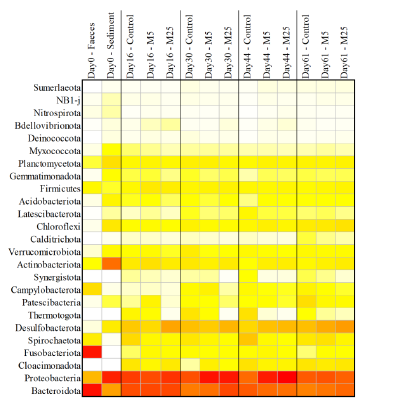ANGEL Roey
- Institute of Soil Biology and Geochemistry, Biology Centre CAS, České Budějovice, Czech Republic
- Bioinformatics dedicated to microbial studies, Microbe-microbe and microbe-host interactions, Microbial biogeochemistry, Microbial biogeography, Microbial ecology and environmental microbiology, Microbiomes
- recommender, manager
Recommendation: 1
Reviews: 0
Recommendation: 1

Molybdate delays sulphide formation in the sediment and transfer to the bulk liquid in a model shrimp pond
Addition of molybdate to shrimp ponds is a promising new technique to delay the accumulation of toxic H2S
Recommended by Roey Angel based on reviews by 2 anonymous reviewersShrimp aquaculture ponds are an established technology that helps answer the demand for high-protein food while reducing the impact of fishing on the oceans.
However, as a closed system, high in organic matter, aquaculture ponds in general and those used for shrimp in particular tend to develop anoxic sediments and favour sulfate reduction to H2S. The development of hydrogen sulphide, in return, is toxic to the shrimp and can lead to lower yields.
A standard solution to the problem is to inject air into the sediments. However, this solution requires additional infrastructure, is costly to operate, and can also disturb other essential life forms in the pond, such as benthic plants.
In this work by Torun et al. (2024), the authors used a carefully designed lab model of shrimp ponds to show that the addition of molybdate at concentrations as low as 5 mg/l delayed the accumulation of H2S and pushed the zone rich in sulphide deeper into the sediment.
The postulated mechanism for the inhibition in H2S production is that molybdate binds to the ATP sulfurylase in sulphate-reducing bacteria (SRB), and together with ATP, they generate adenosine 5′-phosphosulfate (APS) that cannot be used as an electron acceptor.
Surprisingly, however, the growth of SRB was stimulated rather than inhibited in this experiment. While the exact cause remains unknown, the authors postulate that SRB resorted to alternative metabolic pathways such as fermentation.
Overall, while this work was done on a model system in the lab, adding molybdate to shrimp aquaculture ponds is a promising technique and should be tested on a larger scale.
Reference
Torun F, Hostins B, Schryver PD, Boon N, Vrieze JD. (2024). Molybdate delays sulphide formation in the sediment and transfer to the bulk liquid in a model shrimp pond. bioRxiv, ver.3, peer-reviewed and recommended by Peer Community In Microbiology. https://doi.org/10.1101/2023.11.16.567380